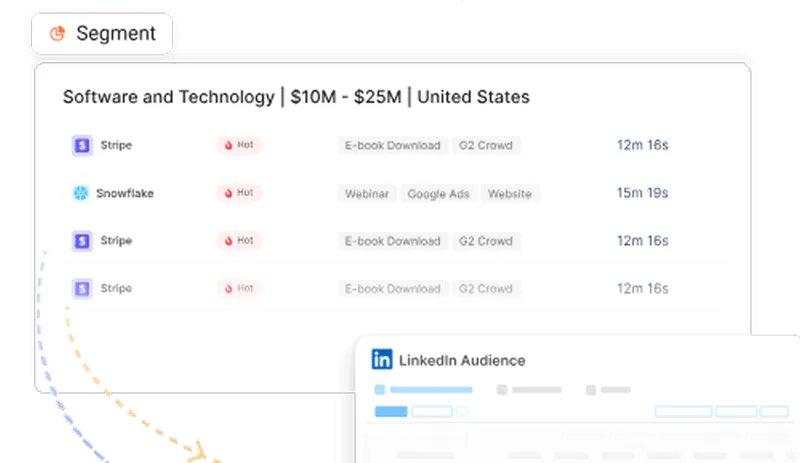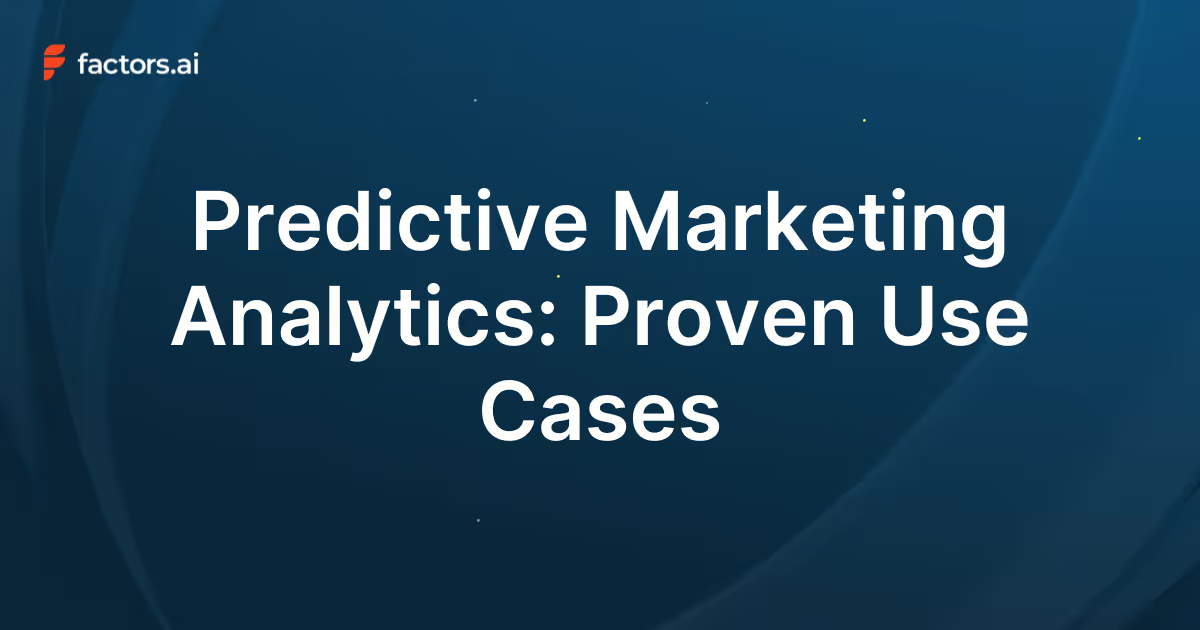Attribution is Broken (Part II): Too Many Cooks in the Kitchen
In "Attribution is Broken (Part II): Too Many Cooks in the Kitchen," we explore the challenges of assigning credit in complex projects.
The following post is the second part of our “Attribution is Broken” series.
Here’s a link to the introductory post if you’re interested.
I recently came across an Instagram ad for a shiny new pair of noise-cancelling headphones. Being the mindless sheep I am, I decided that I needed a pair. So after some light research involving a few customer reviews and price comparisons, I went ahead and bought them. From start to finish, the purchase process took me about an hour or so. Admittedly, the headphones set me back a little but who cares? I can always return them if I’m not happy right? This was a short and sweet journey that’s easily digestible by most multi-touch attribution tools. And yet, this journey takes quite the turn when marketers want to reach out to businesses instead.
B2B purchase decisions are tricky affairs. They involve complex high-value contracts, lengthy sales cycles that stretch over several months, and limited scope for backtracking once confirmed. As a result, all B2B purchases — especially those made in technology — are critical decisions. So, to mitigate the risk of making poor purchases, organisations include multiple stakeholders across multiple departments over multiple levels of seniority in their decision-making process. As an unfortunate consequence, however, this involvement of heterogeneous stakeholders tremendously complicates the account’s journey from awareness to purchase.
Here’s a simple example of a complex B2B sales cycle:
HubForce, a promising CRM start-up takes out a couple of ads on Linkedin and Facebook. They also publish content in the form of blogs and host interactive webinars on a regular basis. Additionally, HubForce’s SDR team requests demo meetings from CSOs, Demand Gen VPs, and Project Managers on a daily basis through outbound emails.
Ali, who is project head at Drifter (a leading chatbot service provider), receives one such mail. Ali happens to be in the market for a CRM tool and schedules a demo with HubForce. HubForce’s sales head, Vinay, walks Ali through the several technical features they have to offer. This includes HubForce’s ability to integrate with Drifter’s current tech stack and a cutting-edge AI tool that automates a lot of Ali’s grunt work. Ali is impressed and wants to onboard Hubforce. However, he needs to run the purchase decision by his CEO, Anaiya, before making it official.
Upon hearing Ali’s rave reviews, Anaiya is curious to learn a little more about HubForce. She reads a couple of their blog posts and digs up a few reviews written by existing customers. Being a fastidious CEO, Anaiya also schedules a follow-up meeting with Vinay. This time around, Vinay demonstrates what HubForce can bring to Drifter’s revenue and sales pipeline. Rather than zone in on technical details, Vinay focuses on HubForce’s big-picture gains instead. Anaiya likes what she sees but wants to discuss their budget constraints with her finance chief, Albert, before signing on the dotted line.
During their weekly catch-up, Anaiya fills Albert in on the HubForce deal — specifically the pricing details. Albert isn’t thrilled. He’s of the opinion that Drifter would be overpaying for what’s essentially a roided-out excel. Upon hearing this, Anaiya decides to put the deal on hold until next quarter. During this time, Albert is frequently targeted by HubForce ads on Linkedin. He even attends one of Hubforce’s webinars on their cutting-edge, AI-powered CRM technology. Eventually, Albert is convinced of the value that the CRM platform could bring to Drifter.
As the next quarter rolls around, Ali, Anaiya, and Albert discuss the deal one last time. They weigh the pros and cons and arrive at a unanimous decision to purchase a HubForce subscription. Congratulations you guys!

Clearly, the previous purchasing process was far more complex than the case of the headphones. A nuanced web of back and forth interactions had to take place before the deal could be closed. As a marketer looking to replicate this process in a scalable manner, multi-touch attribution is your go-to tool. Attribution modelling empowers marketers to unravel their intricate customer journeys, and understand the performance of nearly every marketing activity. Attribution reveals, to a large extent, what campaigns are working, and what campaigns aren’t. In turn, marketers can make data-driven resource allocations across their marketing activities. All that being said, attribution isn’t without its challenges when it comes to dealing with multiple stakeholders.
Across the length of the previous example, HubForce depended on a variety of content, strategies, and channels to get their deal across the line. They had to sell different aspects of their products to different types of audiences. Project managers may care about practical details like integration, accessibility, and time-saving. CEOs may be interested in high-level gains like ROI, pipeline, and revenue. Finance heads want to know that they’re getting the best possible price. On top of all this, each position is filled by individuals with their own motivations and preferences. The one-on-one demo clearly worked for Ali, but Anaiya chose to perform some background research as well. Albert, on the other hand, was convinced after a couple of targeted ads and a relevant webinar. All these variables contribute to the challenges of B2B attribution:
The B2B Buyer Dichotomy
B2B marketers engage with individual contacts through personalised emails, targeted ads, etc. However, the purchase decision ultimately involves a buying committee. In the example discussed above, there are three stakeholder groups that make up the buying committee- the core buying group (Ali and his project team), the group that focuses on negotiating terms (Albert and his finance team), and finally, the group which exercises the final approval (Anaiya, the CEO).
The core buying group initiates the process by identifying the need for the product, ideates on the potential solutions, and looks for options. The group that negotiates the terms will focus more on protecting the company’s interests. This involves the members from teams like legal and finance. Lastly, the final approval stakeholder group has the final say or authority. The focus of this group is to look at the company’s larger aims and strategy implementations.
The marketer has to align these diverse internal stakeholders during the sales journey.
Different Strokes for Different Folks
Now that the different internal stakeholders within the buying committee have different core focuses, the marketer needs to adjust their approach to each group depending on what they care about. For instance, in our example, finance cares more about the pricing, while the CEO cares about the revenue and ROI, and finally, the marketing team would care about metrics like conversions, pipeline, etc.
In addition to this, the sales cycle is often complicated and non-linear. Complex B2B purchases such as enterprise software, have a lot more information for the buying committee to consider. This process becomes more drawn out with the complexity of the solution and the presence of alternatives. The multiple stakeholders in an account who have different preferences and objectives, may revisit the various stages of the buying process non-sequentially and sometimes, simultaneously. The stakeholder behavior can also be loopy where they may switch between being interested to not interested to being interested again, as we saw in our example.
Each stakeholder group keeps referring to each other in non-linear learning loops before they come to the final decision of moving forward with the purchase or not.
Invisible Touchpoints
The touchpoints in our sales cycle are of different types. While digital ads, reviews, page views are visible, there may be some that are invisible. Attribution models trying to map stakeholders might be unable to account for these touchpoints. For instance, in our HubForce example, the finance head, who was not entirely on board with the CRM purchase, attends a webinar which finally leads to the deal being won. Data issues can arise if your CRM and marketing automation data are not flowing properly. In this case, if the impact of the webinar has not been stitched in the sales journey.
Today, most B2B marketers employ a single attribution model across a fixed timeline to derive insights from their campaign data. Sure, this approach is easy, quick, and uncomplicated. But it is also dangerously inaccurate. The issues brought on by the involvement of several stakeholders (Heterogeneous preferences and objectives, long sales cycles, loopy (back and forth) behavior of interest, and a diverse range of touchpoints) render simple attribution modelling ineffective. Instead, marketers should aim to treat each group of users independently and attempt to learn what works best for each one of them. This involves parsing out each type of customer and individually employing the appropriate model. This approach allows you to ask nuanced questions and derive genuinely actionable insights. Of course, this is a far more advanced process than an all-encompassing approach — but it’s infinitely more accurate as well.
So what’s the solution for implementing incredibly advanced attribution models?
Well, an incredibly advanced attribution platform of course!
Learn more about Factors.AI cutting-edge attribution here.
See how Factors can 2x your ROI
Boost your LinkedIn ROI in no time using data-driven insights


See Factors in action.
Schedule a personalized demo or sign up to get started for free
LinkedIn Marketing Partner
GDPR & SOC2 Type II
.svg)







.avif)
.avif)

